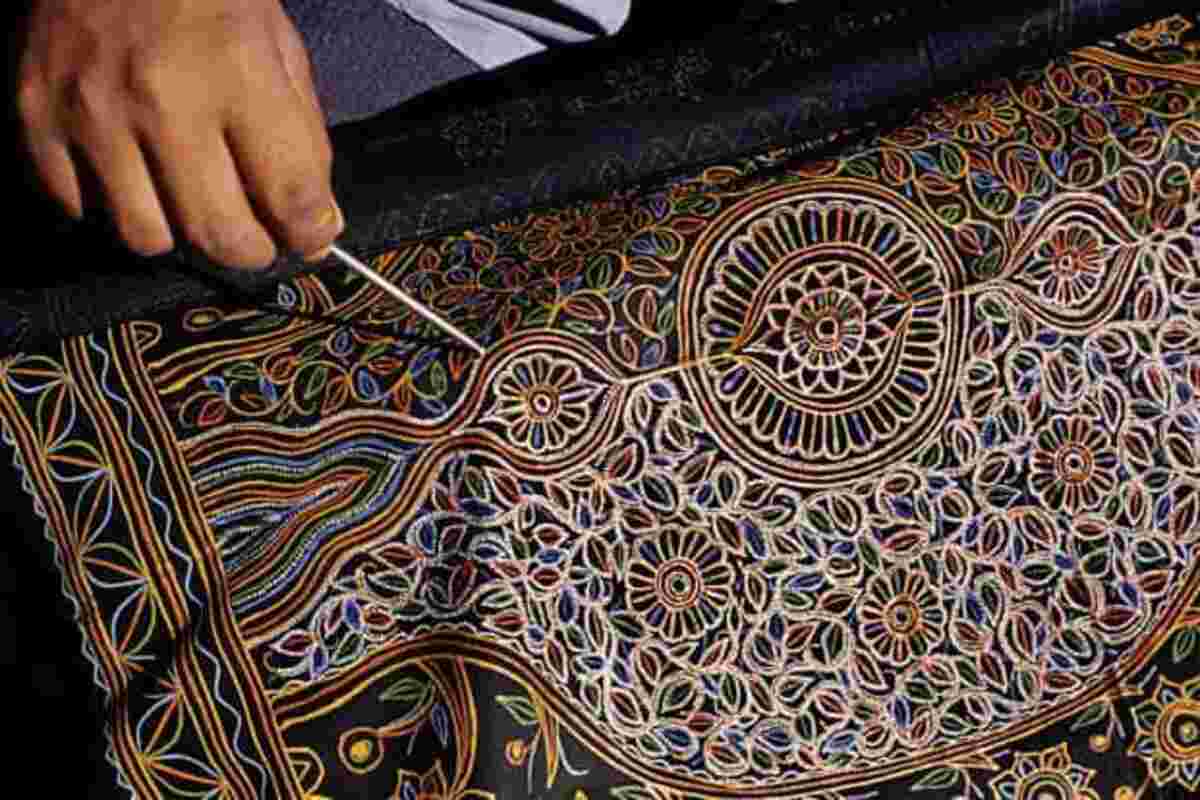PM Modi to interact with Pradhan Mantri Rashtriya Bal Puraskar awardees today
This year, 11 children from across the country, under different categories of Bal Shakti Puraskar, have been selected for PMRBP-2023.
Rogan art is so unique and unusual that Indian PM Narendra Modi gave then-US President Barack Obama a Tree of Life Rogan painting during his visit to the US in September 2014. The artwork was created by national award winner Abdul Gafur Khatri.

rogan art form (photo: stock)
Imagine a mirror image without any mirror. The artwork is pure imagination on cloth. The artist creates the painting without any tracing, drawing, or brush, using only heated oil and vegetable colors and a metal square or pointer tool to execute his craft.
Rogan art, a method of cloth painting, is a four-century-old art form exclusively practiced in the Kutch district of Gujarat, India. Until recently, Rogan art was on the brink of extinction but was revived by the efforts of one family.
The art gets its name from the main ingredient of the paint it requires: castor oil. ‘Rogan’, a word of Persian origin, means ‘oil-based’. Some believe Rogan art originated in Persia before ending up in India.
Advertisement
Rogan artwork is traditionally designed on bridal wear and wedding fabrics using rich bright natural colors without using any drawing brush.
The rogan fabric painting is produced through an arduous process. First, oil extracted from castor seeds is boiled in a cauldron for 12 to 14 hours periodically. The whole process takes around two days. The heated castor oil then meets cold water which thickens it and turns it into the slimy golden brown substance called rogan.
The next step is adding colour. For this, vibrant pigments are mixed with water and the rogan using the help of a pestle. The result is rogan paint which is then stored in water to prevent it from drying.
The painting process is not easy either. It can take days, weeks, or months depending on the design. In contrast to this meticulous process, the tools that the artist needs are quite simple: a rod and the palm of the hand.
For this unique art form, the artists usually prefer using dark fabrics that accentuate the vibrant colours of their paint. The fabric is laid out in front of the artist who takes some of the paint and starts twirling it in his palm with the rod.
This act of twirling the paint is an essential part of the painting process as it gives the paint the necessary texture. Heat from the palm loosens the thick paint just enough for the artist to form a thread.
The rest is up to the imagination of the artist. By moving the rod above the fabric, the artist lays the paint on the cloth in the form of thin lines. Often, only half of the fabric is painted and the rest is folded onto the painted part to duplicate the design.
The painting process is freehand and the end result resembles embroidery. The prevailing designs found in rogan art are patterns of florals and mandalas. While the tree of life is the most admired design, it is also the most demanding one to work on.
Rogan painting is an inherited art form that has been around for 400 years. It is said to have originated from Muslim Khatris and was practised exclusively in the Gujarat region.
Rogan art is so unique and unusual that Indian PM Narendra Modi gave then-US President Barack Obama a Tree of Life Rogan painting during his visit to the US in September 2014. The artwork was created by national award winner Abdul Gafur Khatri.
The Khatris have also begun selling their fabrics through social media, and to preserve the art form, they have begun enrolling younger artists to ensure that the art flourishes. They say they have begun training women and children not only from Kutch, but across India, in Rogan art.
Advertisement